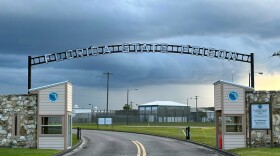-
Florida law allows capital punishment with a jury recommendation of at least 8-4 in favor of execution, the lowest standard in the nation, according to the Death Penalty Information Center.
-
Frank Walls' death sentence would be Florida's 19th in 2025, furthering a state record for total executions in a single year. Appeals were still pending before the U.S. Supreme Court.
-
Richard Barry Randolph, 63, was sentenced to death for killing his former manager at a Palatka convenience store.
-
Frank Athen Walls faces a Dec. 18 lethal injection for the murder of a couple during home invasion robbery. Walls would be the 19th person set for execution in Florida in 2025.
-
On "The Florida Roundup," Curtisia Windom opens up about discovering her father killed her mother, grandmother and another man.
-
Bryan Frederick Jennings, 66, was sentenced to death twice in Brevard County, both of which were reversed on appeal. A final trial in 1986 brought a third death sentence for the murder of Rebecca Kunash.
-
Mark Allen Geralds, 58, was convicted in the 1989 murder of Tressa Pettibone in Panama City Beach. He is scheduled for lethal injection on Dec. 9.
-
Mark Geralds, 58, was found guilty in 1990 of first-degree murder, armed robbery, burglary and grand theft auto. A jury unanimously recommended the death penalty.
-
DeSantis said he thinks the death penalty could be a “strong deterrent” if sentences were more quickly carried out.
-
Authorities say 65-year-old Norman Mearle Grim Jr. was pronounced dead by lethal injection. Grim was convicted of sexual battery and first-degree murder of his neighbor Cynthia Campbell.
-
A public defender argues against the process that allowed Bryan Jennings to be selected for a death warrant after he “languished on Death Row for more than three years without a lawyer.”
-
Richard Barry Randolph, 63, was found guilty of the 1988 rape and fatal stabbing of a convenience store manager in Palatka.
Play Live Radio
Next Up:
0:00
0:00
Available On Air Stations









